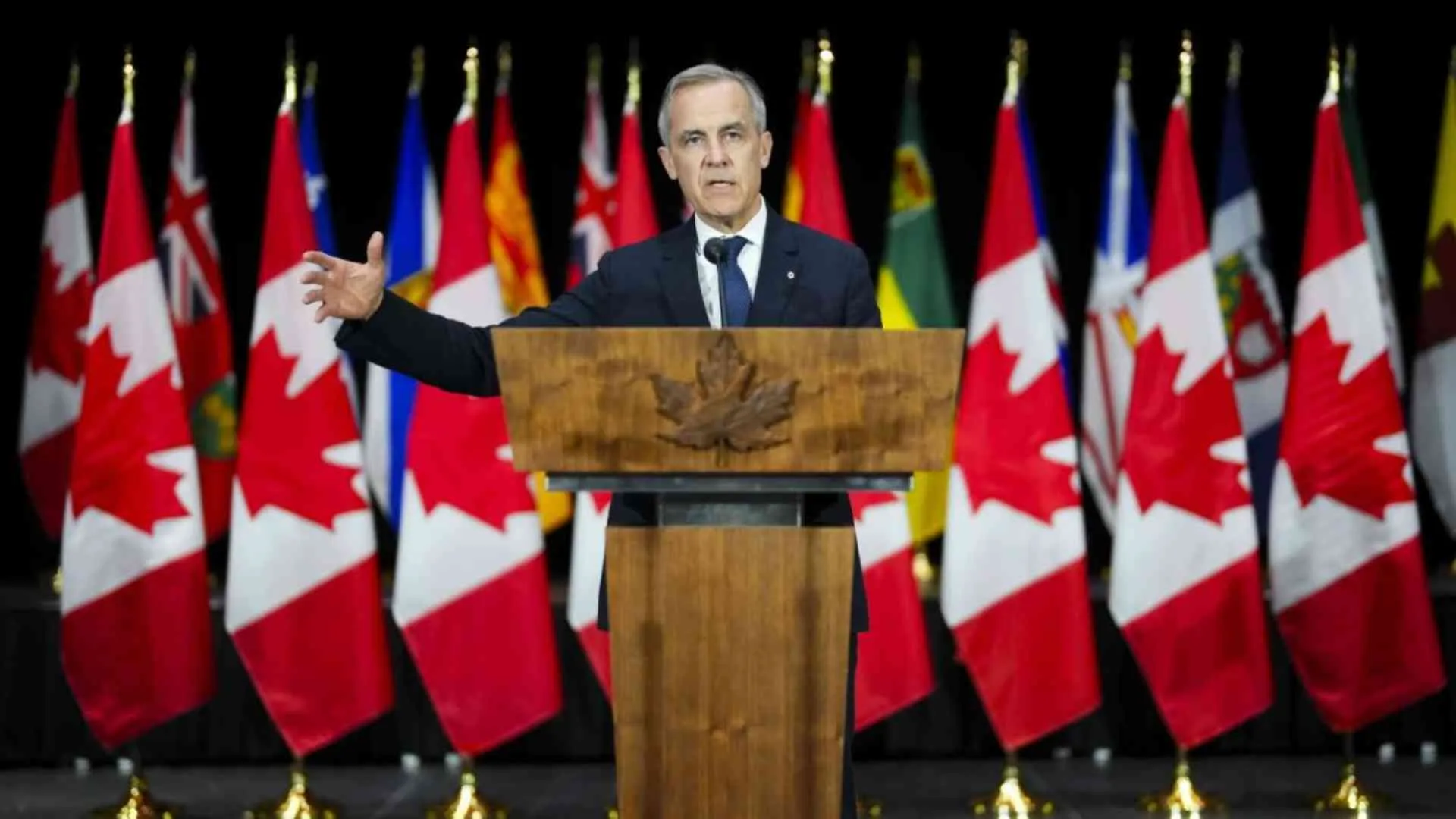Canadians head to the polls today in an election that’s been shaped by rising economic challenges and shifting global dynamics. From trade tensions with the U.S. to skyrocketing costs of living and growing climate concerns, the stakes have never been higher. Voters are now choosing between different visions for the country’s future, with each party offering their take on how to protect Canada’s economy, rebuild public services, and face global uncertainty head-on.
The Soaring Cost of Living
Inflation has become a major issue for Canadians, with the prices of food, gas, and everyday essentials going through the roof over the past couple of years. For the third year in a row, the cost of living is rising faster than wages, leaving many Canadians struggling to make ends meet.
Pierre Poilievre’s Conservative Party has made this issue the focus of its campaign, promising to “axe the carbon tax,” lower income taxes, and cut red tape in various industries to help bring down prices. Meanwhile, the Liberals, now under Mark Carney, are offering a more moderate solution. They’re proposing targeted tax credits for low- and middle-income Canadians and providing direct support for families most impacted by inflation.
The NDP, led by Jagmeet Singh, believes the cost-of-living crisis is driven by “corporate greed.” They’re pushing for a windfall tax on large corporations that have seen huge profits during the inflation surge. The Green Party, on the other hand, thinks the real answer lies in transitioning the economy away from fossil fuels and building industries that are more stable and sustainable.
The Housing Crisis
Canada’s housing market has become a nightmare, especially in cities like Toronto, Vancouver, and Montreal, where young Canadians can no longer afford to buy homes, and rental prices keep rising.
Poilievre has promised to unlock federal land for housing projects and dramatically cut building regulations. Carney’s Liberals have a national housing plan that includes incentives for affordable rental housing and a program to help first-time homebuyers.
The NDP wants to build 500,000 affordable homes in the next ten years and tighten up rules to curb real estate speculation by foreign buyers. The Bloc Québécois, which mainly focuses on Quebec, wants more provincial control over housing policies to address the different needs across the country.
Healthcare Under Pressure
Canada’s public healthcare system, long a point of pride, is struggling to keep up with a growing population, staff shortages, and an aging demographic.
The NDP is pushing for a major expansion of healthcare services, including universal pharmacare and dental care. The Liberals, under Carney, are offering conditional funding to provinces to help cut wait times and improve care. Poilievre’s Conservatives want to give provinces more control over healthcare delivery while still providing federal funding, though critics warn this could lead to privatization.
The Greens want to take a broader approach, focusing not just on healthcare but on environmental and social issues that impact health, with a “health-in-all-policies” strategy.
Trade Tensions with the U.S.
One of the most significant issues in this election is how Canada will handle its deteriorating relationship with the U.S. Under former President Trump, tariffs on Canadian steel, aluminum, and agricultural goods have triggered a trade war, adding uncertainty to the economy.
Most parties agree that Canada needs to retaliate with tariffs, but they differ on how to go about it. Poilievre’s Conservatives propose using tariff revenue to offer tax relief to Canadian workers. The Liberals, under Carney, want to offer financial support for industries affected by the tariffs, along with investing C$5 billion in infrastructure and C$2 billion to protect the auto sector.
The NDP says any money raised from tariffs should go directly to relief efforts and has even suggested a 100% tariff on Tesla products if tensions continue to escalate. The Bloc Québécois has called for support packages similar to those given during the pandemic, especially for Quebec’s aluminum industry.
Both the Conservatives and Liberals are committed to removing trade barriers within Canada, while Poilievre has proposed creating a “Commonwealth trade and mobility agreement” with countries like the UK, Australia, and New Zealand.
Climate Change and Wildfires
The devastating wildfires that swept across Alberta and British Columbia last summer have put climate change front and center in the election. The NDP and the Greens are calling for urgent action, including ending fossil fuel subsidies, stopping new oil and gas projects, and investing heavily in renewable energy.
The NDP goes further, pledging to phase out fossil fuels by 2035. Carney’s Liberals remain committed to achieving net-zero emissions by 2050, but their past support for pipeline projects has raised concerns about their credibility on this issue.
Poilievre’s Conservatives acknowledge climate change but prefer a technology-focused response, such as carbon capture initiatives, over measures like carbon pricing. They’re also pushing to lift the cap on oil and gas emissions, effectively undoing Bill C-69, a law that requires environmental assessments for major projects.
Immigration and the Khalistan Movement
Immigration has become a hot topic in this election, especially with the ongoing controversy around the Khalistan movement in Canada. The fallout between India and Canada over allegations of interference has brought diaspora politics into the spotlight.
The Liberals defend Canada’s multicultural policies but have promised to crack down on any groups involved in violent extremism. Poilievre’s Conservatives are taking a tougher stance, proposing stricter immigration checks and stronger laws against foreign political interference. The NDP continues to focus on immigrant rights, advocating for policies that support social integration.




















